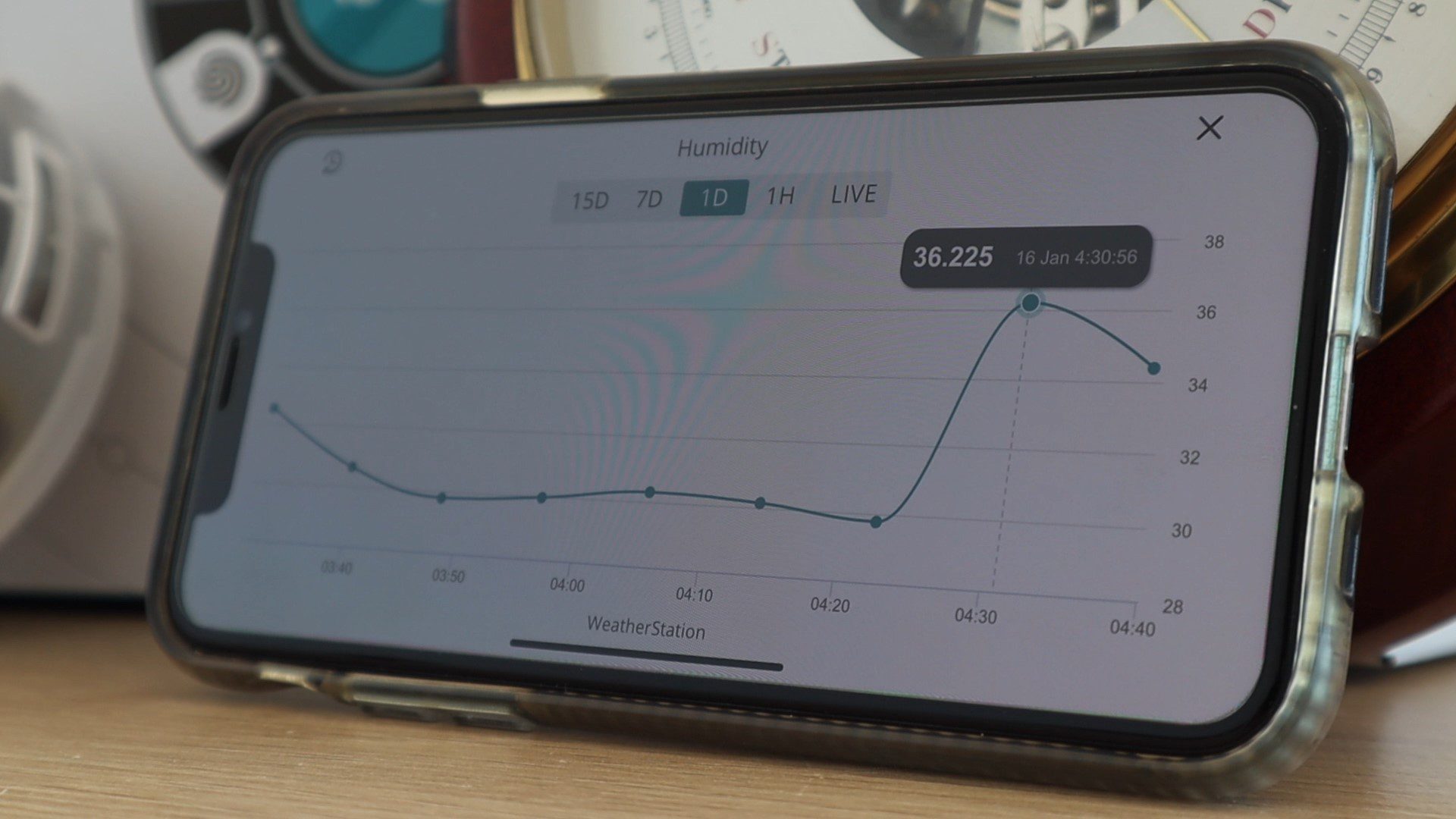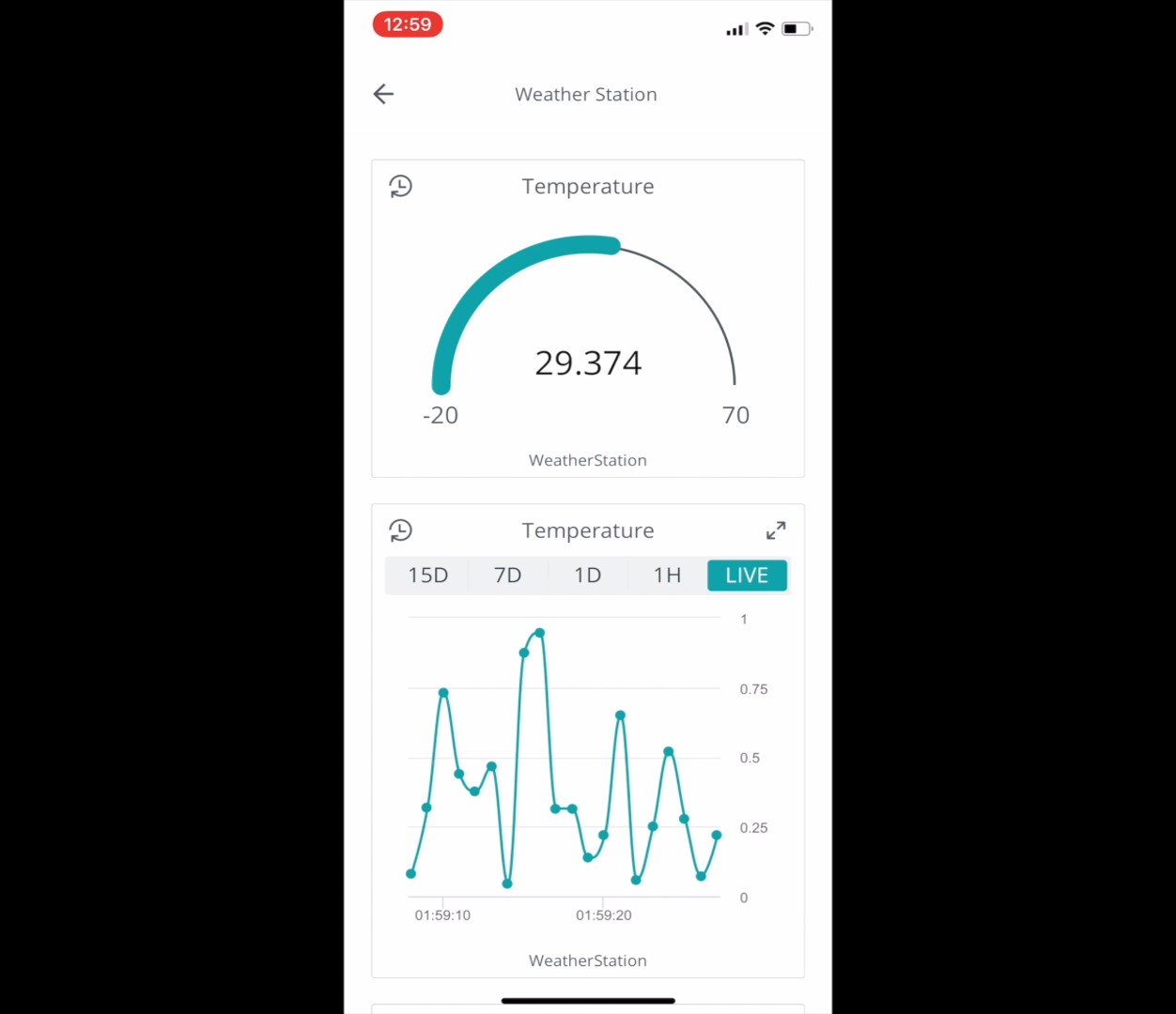Mastering IoT Remote Desktop Over Internet: The Ultimate Guide
Imagine this: You're chilling at a café, sipping your favorite latte, and suddenly you realize you need to access your office computer to finish an urgent task. No worries, my friend—IoT remote desktop over internet has got your back. In today’s fast-paced world, being able to access your desktop from anywhere, anytime, is not just a luxury but a necessity. Whether you're a remote worker, a tech enthusiast, or simply someone who needs to stay connected, IoT remote desktop over internet is here to change the game.
Now, let’s break it down. IoT, or the Internet of Things, is no longer a buzzword; it’s a reality that’s reshaping how we interact with technology. And when you combine IoT with remote desktop capabilities, you’ve got yourself a powerful tool that can boost productivity, save time, and keep you connected no matter where you are. So, if you’ve ever wondered how to set up a remote desktop using IoT, you’re in the right place.
This guide is packed with everything you need to know about IoT remote desktop over internet, from the basics to advanced tips and tricks. We’ll dive deep into how it works, why it matters, and how you can harness its full potential. Stick around, and let’s explore the future of remote work together!
- 4k Movies Download Hindi Bollywood Your Ultimate Guide To Highquality Entertainment
- Movierulzz The Ultimate Hub For Film Enthusiasts
Table of Contents
- What is IoT Remote Desktop Over Internet?
- How Does IoT Remote Desktop Work?
- Benefits of IoT Remote Desktop
- Setting Up Your IoT Remote Desktop
- Common Challenges and Solutions
- Top Tools and Software for IoT Remote Desktop
- Security Considerations for IoT Remote Desktop
- Best Practices for Using IoT Remote Desktop
- The Future of IoT Remote Desktop
- Conclusion: Take Action Today!
What is IoT Remote Desktop Over Internet?
Alright, let’s start with the basics. IoT remote desktop over internet refers to the ability to control and access your computer or server remotely using IoT-enabled devices. Think of it as having a virtual extension of your desktop, accessible from anywhere in the world via the internet. It’s like giving your computer a pair of wings so it can fly right into your hands, no matter where you are.
This technology allows you to perform tasks as if you were sitting right in front of your computer. From running applications to managing files, everything is at your fingertips. And with the rise of IoT, the possibilities are endless. Devices like smartwatches, smartphones, and even voice-activated assistants can now act as gateways to your remote desktop.
But why is this important? Well, in today’s digital age, flexibility is key. Whether you’re working from home, traveling, or just need to check something on your office PC, IoT remote desktop over internet provides the convenience and efficiency you need to stay productive.
Why IoT Matters in Remote Desktop
IoT brings a whole new dimension to remote desktop solutions. Unlike traditional remote access methods, IoT-enabled systems offer enhanced connectivity, automation, and integration. This means you can not only access your desktop but also automate tasks, monitor devices, and even control smart home appliances—all from the same interface.
For businesses, this translates to streamlined operations, reduced downtime, and improved collaboration. For individuals, it means more freedom and control over their digital lives. So, whether you’re a tech-savvy user or just someone looking to simplify their life, IoT remote desktop over internet has something for everyone.
How Does IoT Remote Desktop Work?
Now that we know what IoT remote desktop over internet is, let’s talk about how it actually works. At its core, it’s all about creating a secure and stable connection between your local device and the remote desktop. Here’s a step-by-step breakdown:
- Connection Setup: First, you need to establish a connection between your local device and the remote desktop. This is usually done using a remote access protocol like RDP (Remote Desktop Protocol) or SSH (Secure Shell).
- Data Transmission: Once connected, the remote desktop sends data packets to your local device, which are then rendered on your screen. This allows you to interact with the remote system as if you were physically present.
- IoT Integration: With IoT, the process becomes even more seamless. IoT devices act as intermediaries, enhancing connectivity and providing additional features like automation and device management.
- Security Measures: To ensure a safe and secure connection, encryption and authentication protocols are implemented. This protects your data from unauthorized access and cyber threats.
It’s like setting up a virtual bridge between your devices, allowing them to communicate and share resources effortlessly. And with IoT, this bridge becomes smarter and more efficient, making remote work a breeze.
Benefits of IoT Remote Desktop
So, why should you consider using IoT remote desktop over internet? Here are some of the top benefits:
- Increased Productivity: With access to your desktop from anywhere, you can work more efficiently and respond to tasks promptly.
- Cost Savings: By reducing the need for physical office space and equipment, businesses can save significant costs.
- Enhanced Flexibility: Whether you’re traveling, working from home, or just need to check something on the go, IoT remote desktop gives you the freedom to stay connected.
- Improved Collaboration: Teams can collaborate seamlessly, sharing resources and working together in real-time, no matter where they are located.
- Automation and Integration: IoT-enabled systems allow for automated tasks and integration with other smart devices, streamlining operations and saving time.
These benefits make IoT remote desktop over internet a must-have for anyone looking to stay competitive and efficient in today’s digital landscape.
Real-World Applications
Let’s take a look at some real-world examples of how IoT remote desktop over internet is being used:
- Remote IT Support: IT professionals can diagnose and fix issues on remote systems without needing to be physically present.
- Smart Home Automation: Homeowners can control their smart home devices and monitor their security systems from their remote desktop.
- Healthcare: Doctors and nurses can access patient records and medical systems remotely, improving healthcare delivery.
- Education: Teachers and students can access educational resources and participate in virtual classrooms from anywhere in the world.
As you can see, the applications are diverse and impactful, making IoT remote desktop over internet a game-changer across various industries.
Setting Up Your IoT Remote Desktop
Ready to set up your own IoT remote desktop over internet? Here’s a quick guide to get you started:
Step 1: Choose the Right Software
There are several software options available for setting up a remote desktop. Some popular choices include:
- Microsoft Remote Desktop
- TeamViewer
- AnyDesk
- Chrome Remote Desktop
Each software has its own set of features and requirements, so choose one that best fits your needs.
Step 2: Configure Your Network
Make sure your network is set up for remote access. This may involve configuring your router, setting up port forwarding, and ensuring a stable internet connection.
Step 3: Install and Configure the Software
Install the chosen software on both your local and remote devices. Follow the setup instructions carefully to ensure everything is configured correctly.
Step 4: Test the Connection
Once everything is set up, test the connection to ensure it’s working properly. Try accessing your remote desktop and performing a few tasks to make sure everything is running smoothly.
And there you have it—a fully functional IoT remote desktop over internet ready to take your productivity to the next level.
Common Challenges and Solutions
While IoT remote desktop over internet offers numerous benefits, it’s not without its challenges. Here are some common issues and how to overcome them:
- Connection Issues: Poor internet connectivity can disrupt the remote desktop experience. Ensure you have a stable and high-speed internet connection.
- Security Risks: Without proper security measures, your data could be at risk. Always use encryption and authentication protocols to protect your connection.
- Compatibility Problems: Not all devices and operating systems are compatible with remote desktop software. Check the requirements before setting up.
- Performance Lag: High-resolution graphics and large file transfers can cause lag. Optimize your settings and use compression techniques to improve performance.
By addressing these challenges, you can ensure a smooth and hassle-free IoT remote desktop experience.
Top Tools and Software for IoT Remote Desktop
When it comes to IoT remote desktop over internet, having the right tools and software can make all the difference. Here are some of the best options available:
- Microsoft Remote Desktop: A powerful and reliable solution for Windows users, offering seamless integration with other Microsoft products.
- TeamViewer: Known for its ease of use and cross-platform compatibility, TeamViewer is a popular choice for both personal and business use.
- AnyDesk: Offers high performance and low latency, making it ideal for demanding applications.
- Chrome Remote Desktop: A browser-based solution that’s easy to set up and use, perfect for casual users.
Each tool has its own strengths, so choose one that aligns with your specific needs and preferences.
Security Considerations for IoT Remote Desktop
Security is a top priority when it comes to IoT remote desktop over internet. Here are some key considerations to keep in mind:
- Use Strong Passwords: Always use strong, unique passwords for your remote desktop accounts.
- Enable Two-Factor Authentication: Add an extra layer of security by enabling two-factor authentication.
- Keep Software Updated: Regularly update your remote desktop software to ensure you have the latest security patches.
- Monitor Activity Logs: Keep an eye on activity logs to detect any suspicious behavior.
By implementing these security measures, you can protect your data and ensure a safe remote desktop experience.
Best Practices for Using IoT Remote Desktop
To get the most out of your IoT remote desktop over internet, follow these best practices:
- Optimize Settings: Adjust settings like resolution and compression to improve performance.
- Backup Regularly: Regularly back up your important files to prevent data loss.
- Limit Access: Restrict access to only those who need it, reducing the risk of unauthorized use.
- Stay Organized: Keep your files and applications organized for easy access and management.
These practices will help you make the most of your IoT remote desktop while minimizing potential issues.
The Future of IoT Remote Desktop
The future of IoT remote desktop over internet looks bright. With advancements in technology and increasing demand for remote work solutions, we can expect even more innovations in this space. Some trends to watch out for include:
- AI Integration: AI-powered remote desktop solutions that offer enhanced automation and personalization.
- 5G Connectivity: Faster and more reliable connections, enabling smoother remote desktop experiences.
- Edge Computing: Leveraging edge computing to reduce latency and improve performance.
- Quantum Security: Next-generation security measures to protect against emerging cyber threats.
As technology continues to evolve, IoT remote desktop over internet will undoubtedly play a crucial role in shaping the future of work and
- Duane Lee Chapman Jr The Reallife Bounty Hunter Who Inspired A Tv Sensation
- Movierulz5 The Ultimate Hub For Streaming Movies Online

Remote Desktop for Raspberry Pi and other IoT devices

Monitor The IoT Remote Metrics The DIY Life

Mobile Phone IoT Remote App The DIY Life